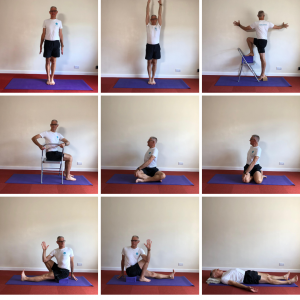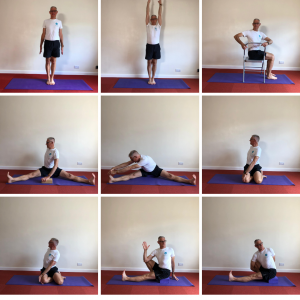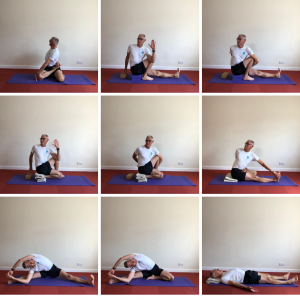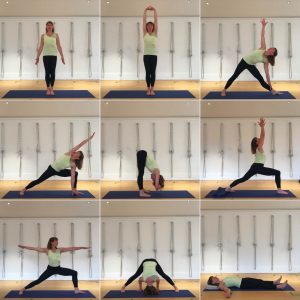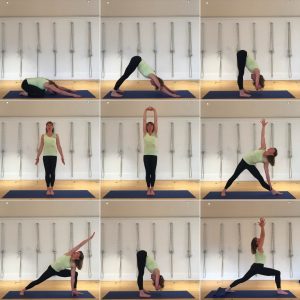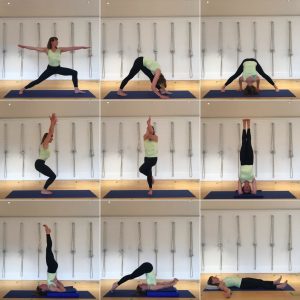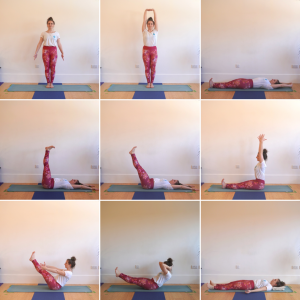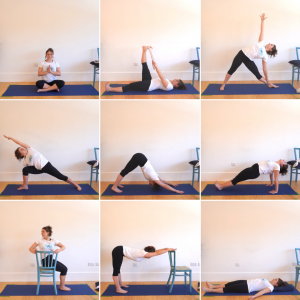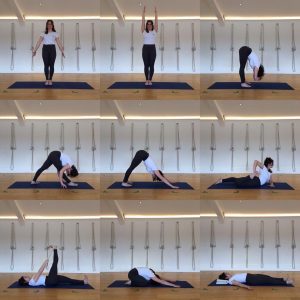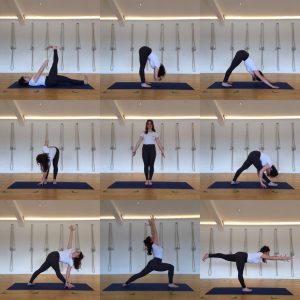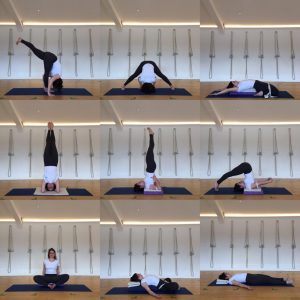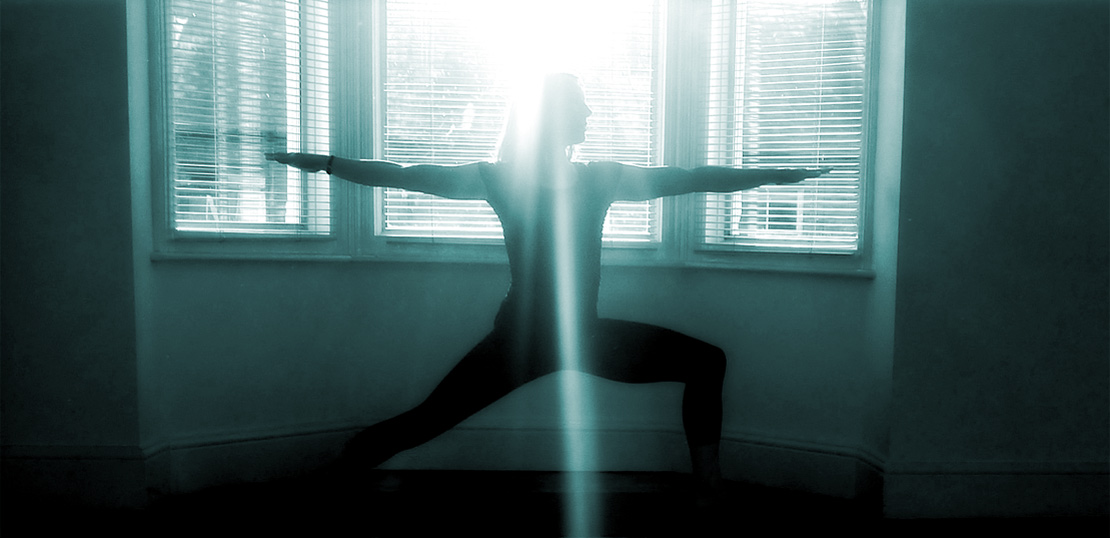
The Yoga Toolkit for Your Home Practice
Have you ever learned a musical instrument, or do you know someone who has? There is an expectation that to progress and to make the most of your lessons there will be a certain amount of practice at home during the week. In this way, technique is embedded and musicality can flourish. It is the same with yoga. We need both; classes and practice.
The Iyengar yoga system offers an amazingly comprehensive approach to yogic practice and study. Arguably it is the most comprehensive and accessible form of classical yoga in contemporary practice. Many people, however, find it difficult to make the leap from attending classes to practising alone at home on any kind of regular basis.
Every craftsperson, every artist, every scientist, needs to develop an intimate knowledge of the tools at their disposal, and also of the materials they have to work with. As yogis our materials are our body, mind and breath. Our tools, in the Iyengar system at least, are primarily asana and pranayama. So don’t be shy. Pick up your tools. Try them out, find out how they work, how they react with the materials you have to hand. The experiments and creations that will emanate are ephemeral, so don’t be afraid. If you feel it goes a bit wrong, nobody cares. Nobody even knows. There is no judgement. Learn something and start again. There is no such thing as going wrong if the process is one of genuine enquiry.
It takes some time to build up the knowledge of vinyasa (sequencing) required to self-direct your home practice. This is where I hope that we might be of some help. We’ll be sharing some short, simple practice programmes that you can try between classes to develop your experience of sequencing, and as an aid to developing that magical chain of unbroken rhythm in practice day to day, week to week and year to year. We will be posting sequences in two categories; Beginners and Improvers. Your instinct and experience will tell you which is suitable for you. You should be practising poses that you have already learned in class. If in doubt, ask your teacher. Don’t hold back. Don’t push too hard. Have fun.
We will be using photographs as a visual aid to sequencing. Photographs are an imperfect medium for the exposition of yoga-asanas. They are too static. Your asanas should be more full of life, of vibration, than the images you see. The photographs will also depict the asanas of a practice in progress; of a practitioner/s who encounter/s many difficulties and set-backs in performing the poses. So apologies in advance for all of the mistakes. We don’t doubt that you can do better. The photographs are there only to guide you in the sequencing; how you practise the asanas is up to you and should be inspired both by what you’ve learned to date and your acute observation of the present-tense conditions of body, mind and breath.
These sequences are not an alternative to attending class on a regular basis, and we actively encourage everyone using them to seek out their local Iyengar yoga teacher if they don’t already have one. We invite and encourage questions and comments. Let us know how you get on, which sequences work for you, which not so much, what you notice and what you want to explore further. This is an intensely personal and individual voyage of discovery, supported by a community of supportive peers. We’re in this together.
STANDINGS
Standings Beginners/General
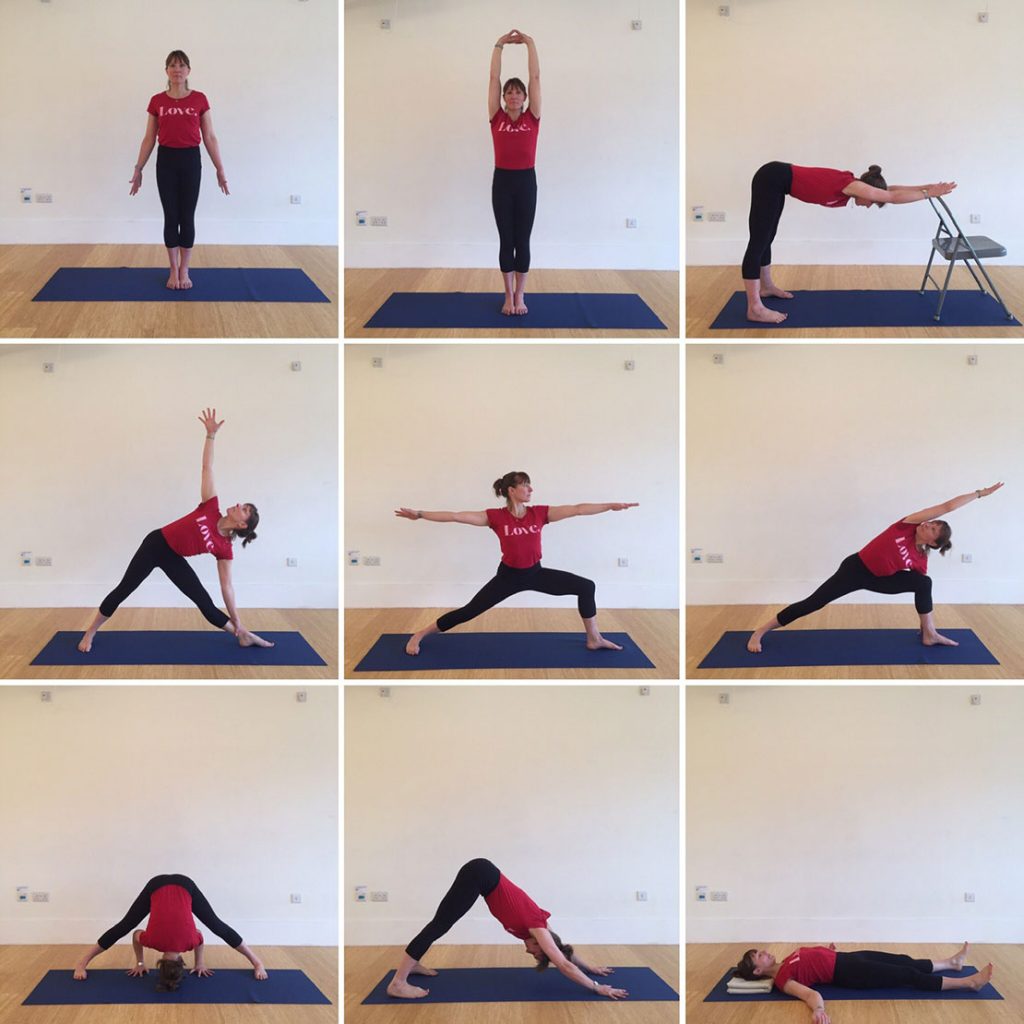
Focus on alignment and stability in the feet. Can you lift the inner ankles and the knee-caps?
Standing Balances Improvers
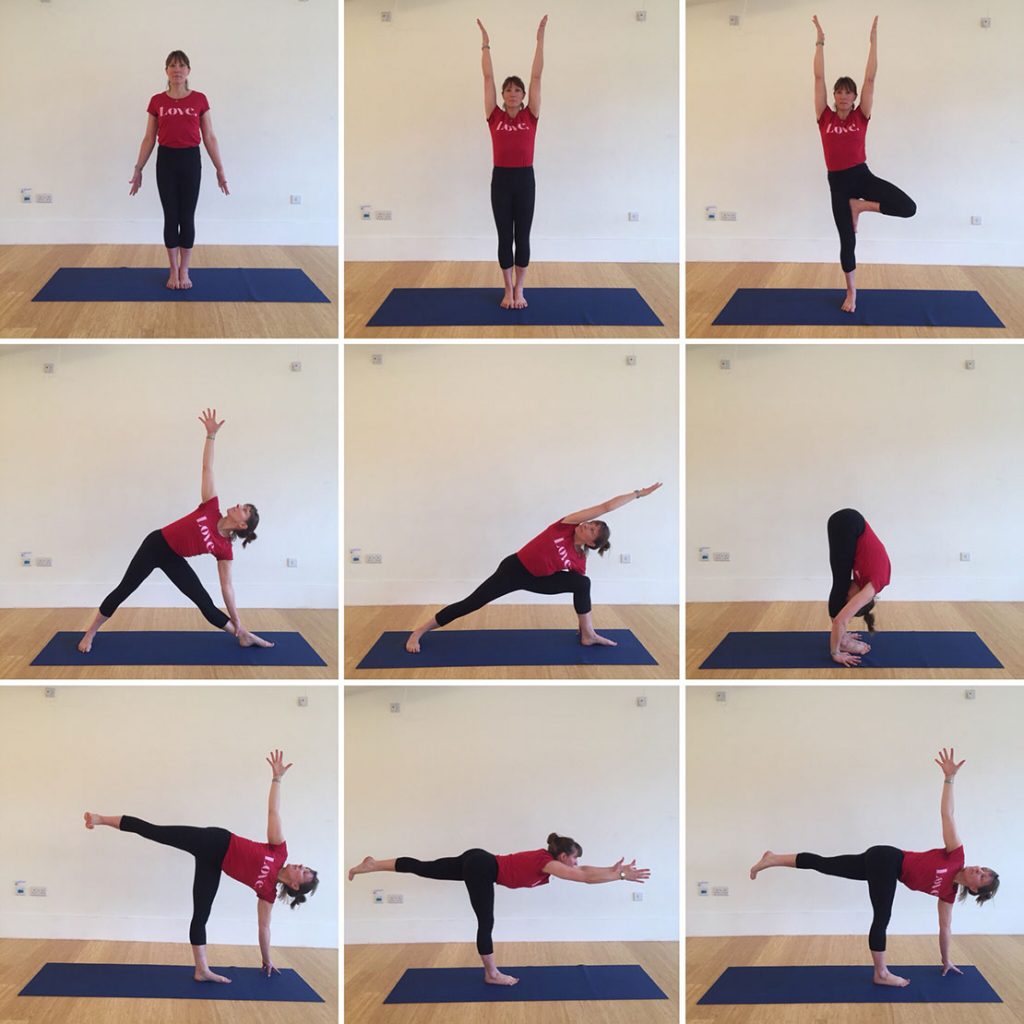
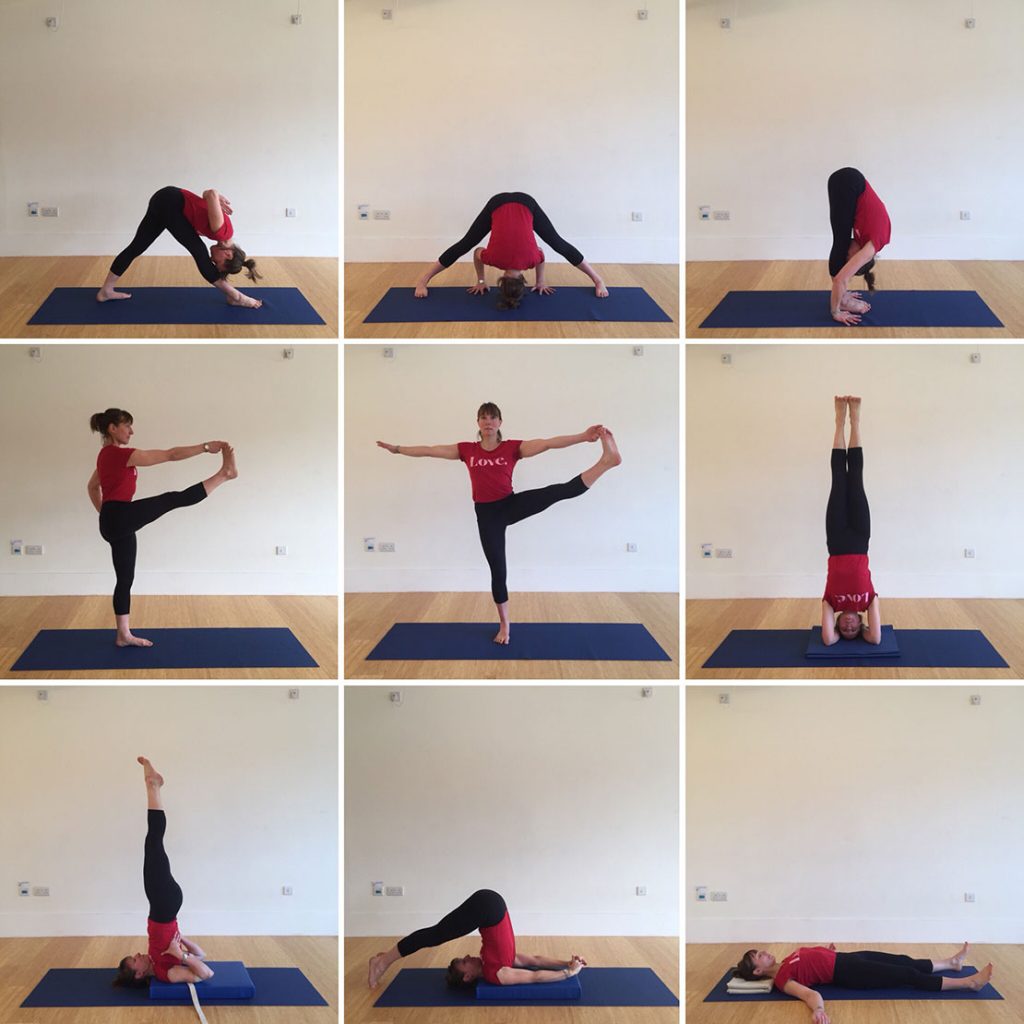
For the balancing poses, grip the hips in. Notice the progression in the orientation of the hips in the sequence Ardha Chandrasana, Virabhadrasana 3, Parivrtta Ardha Chandrasana. You can try linking all three on one side, then all three on the other. What changes?
STANDING TWISTS
Standing Twists Beginners/General
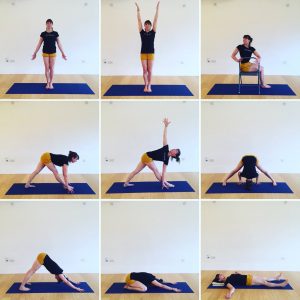
In times of stress, practice what is familiar. If you are new to Iyengar yoga this will be the basic standing poses. Keep your feet on the ground, and don’t forget to lie down in savasana at the end.
Standing Twists Improvers
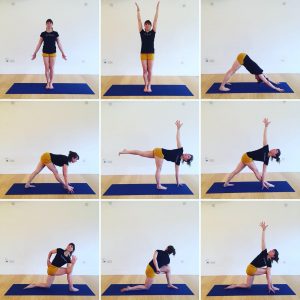
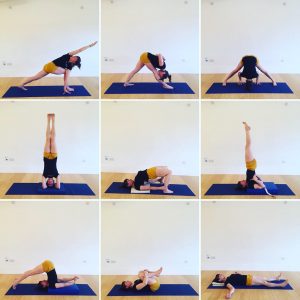
Here’s a sequence to help you feel grounded. Wring out your anxiety with the twists, using the inhalation to extend and the exhalation to rotate further. How do the legs and hips aid balance in the standing twists.
FORWARD BENDS
Forward Bends Beginners/General
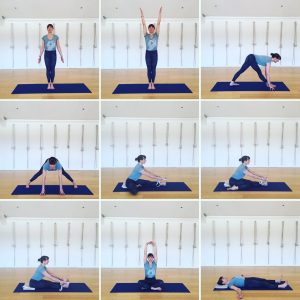
Practice the forward-bending poses with the head up to keep the chest lifted and open the heart region.
Forward Bends Improvers
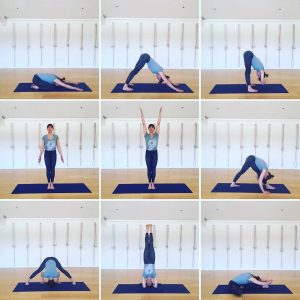
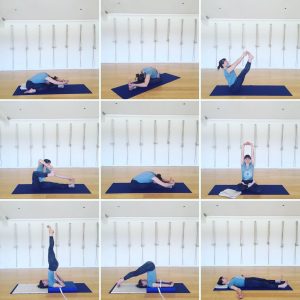
Forward bends can be immensely restful for the mind. Work on the extension and expansion of the back of the legs in order to soften and lengthen the font of the body and find a peaceful repose in the head, neck and brain.
RESTORATIVE
Suitable for all levels
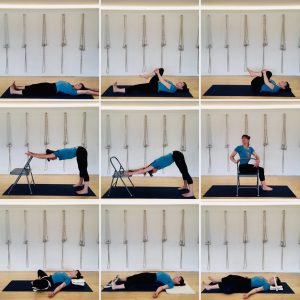
Do all of these poses with a deep relaxation of the abdomen, head and face.
BACK-BENDS
Back-bends Beginners/General

Concentrate on drawing the coccyx into the body in all the poses. Keep the breath soft and even.
Back-Bends Improvers

In the backbending poses take care not to strain in the face and throat. Relax the eyes, ears, jaw and tongue. If the shoulders are tight, in Urdhva Dhanurasana place the hands on bricks.
TWISTS
Twists Beginners/General
For maximum freedom of movement sit on one or two blocks or folded blankets.
Twists Improvers
In the final stage of the twists the abdomen may become compressed or the back rounded, and it is difficult to lift up. It is therefore helpful to remain working in the intermediate stage, with the elbow pressed against the knee or the hands pressed into the floor.
STANDINGS 2.0
Standings 2.0 Beginners/General
Connect the lift and extension of the arms to the lift and extension of the waist and chest.
Standings 2.0 Improvers
Move the tailbone into the body and the front of the pubic plate up. Notice the lift this brings in the inner body.
ABDOMINALS (Navasana Series)
Abdominal Poses Beginners/General
The important thing with these programmes is to work mindfully. They are very strengthening but require absolute attention to the correct actions in the lower back and pelvis.
Do not attempt these programmes during menstruation. If you suffer from back pain, please consult with us before attempting these. There may be amendments you should make.
Abdominal Poses Improvers
The ‘boat’ series is often referred to as ‘abdominals’. Do this and you’ll find out why. I always suggest these poses to people who come to class saying ‘I do yoga for flexibility and gym/pilates for core strength’. Hmm, let’s see. (Don’t underestimate the range of experience that a comprehensive yoga practice can offer!)
The important thing with these programmes is to work mindfully. They are very strengthening but require absolute attention to the correct actions in the lower back and pelvis.
Do not attempt these programmes during menstruation. If you suffer from back pain, please consult with us before attempting these. There may be amendments you should make.
HOLIDAY TOOLKIT
Holiday Toolkit (Suitable for All)
Packing your bags? Off to the beach? Gonna do some yoga whilst you’re away? Go on. If you make space for your yoga mat you won’t regret it. ?
There’s something about practising outside the workaday routine….in some ways it’s more difficult because your usual schedule is turned all inside out and back to front. But then, there’s also a freedom to explore, to let yourself spread into it, to soften the edges that can sometimes become a little rigid if you’re ‘fitting it in’ to a disciplined schedule. So take your mat. Put it out. Sit on it. See what happens. ?
Here’s a little Summer Toolkit for inspiration. We’ve just used a chair, a cushion and a belt- all things you can find in your rental or bring with you (yes, even camping you have these!) It’ll take you about 20 minutes, that’s all. Do it a few times on your holiday and we promise it’ll make you feel fabulous.
Let us know how you get on. ?
RUNNERS’ TOOLKIT
Pre/Post Run Toolkit (For Beginners)
This is an active toolkit that can be adapted to either get you going before exercise or help recover muscles after exercise. Use how you see fit, see what your body needs and see what comes. With a focus on the legs, we’ve got runners, joggers and fartlekers in mind, but it will also work as a friendly assistant to any leg-heavy sports or workouts.
If practising before exercise:
Focus on the opening of the backs of the legs, opening out the hips and waking up those muscles. If you want more of an energising practice, after the first Uttanasana, do Urdhva Hastasana (picture 2) to Uttansana (picture 3) dynamically, 12 times. Stand in Tadasana (picture 1) inhale to lift the arms, exhale and come all the way down, inhale and lift the arms. You could also jump the legs in Parsvottonasana (picture 4), and add an extra downward dog (picture 5) in between each side.
If practising after exercise:
Let the leg muscles spread, particularly in Eka Pada Bekasana (picture 6) and Supta Padangustasana (picture 7). Keep the eyes soft, brain quiet, and focus on the breath. Hold the poses for longer, 1 minute each if possible, and leave 5 minutes for Savasana (picture 9). Release.
Pre/Post Run Toolkit (For Improvers)
Like the Beginners Toolkit, you can adapt the asanas to either clear your head and warm up before you get going, or help release and recover your body post-run/workout – we’ve thrown in some more standings and inversions for those who are familiar with going upside down.
If you’re going for the warm-up, really focus on activating the legs in the standing poses. For winding down post-exercise, hold the supine poses and Halasana for 3-5 minutes and leave plenty of time for a long Savasana. If you need extra support for tired legs or a sore lower back, take a chair or bolster for under the legs in Savasana.
BACKPAIN TOOLKIT
Lower Back Pain Toolkit
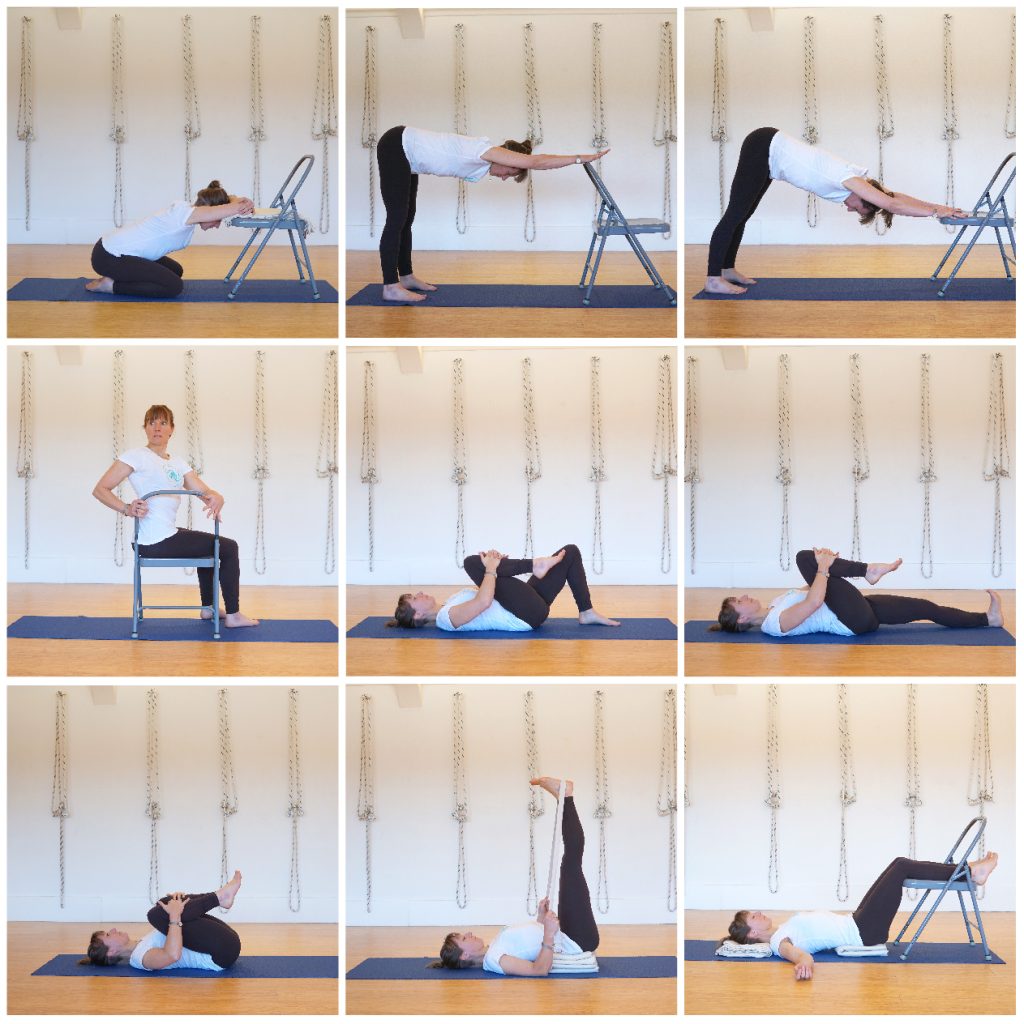
A few people have asked me recently about what to practise at home for lower back pain. As someone who’s suffered chronic lower back pain since I was a child I could talk all day about this- I’ve really had to do the research and the practice to find out what to do to a) prevent and b) relieve pain in the lower back (coccyx, sacrum, sacroiliac, lumbar spine). Of course everyone’s experience is subjective, but as a starter I would highly recommend this little sequence daily, preferably in the morning, or if possible both morning and evening. It will take you about 15 minutes.
The principle is to open out the intervertebral spaces. By reducing compression in the skeletal structure you will reduce the tendency to contract in the supporting muscular structure (paraspinal, gluteal).
It’s super simple. Stay in each pose around 1-3 minutes. Get your mind and breath in there. Be friendly to yourself- even the bits that hurt you.
Let me know how you get on.
SHOULDERS TOOLKIT
Tight Shoulders Toolkit
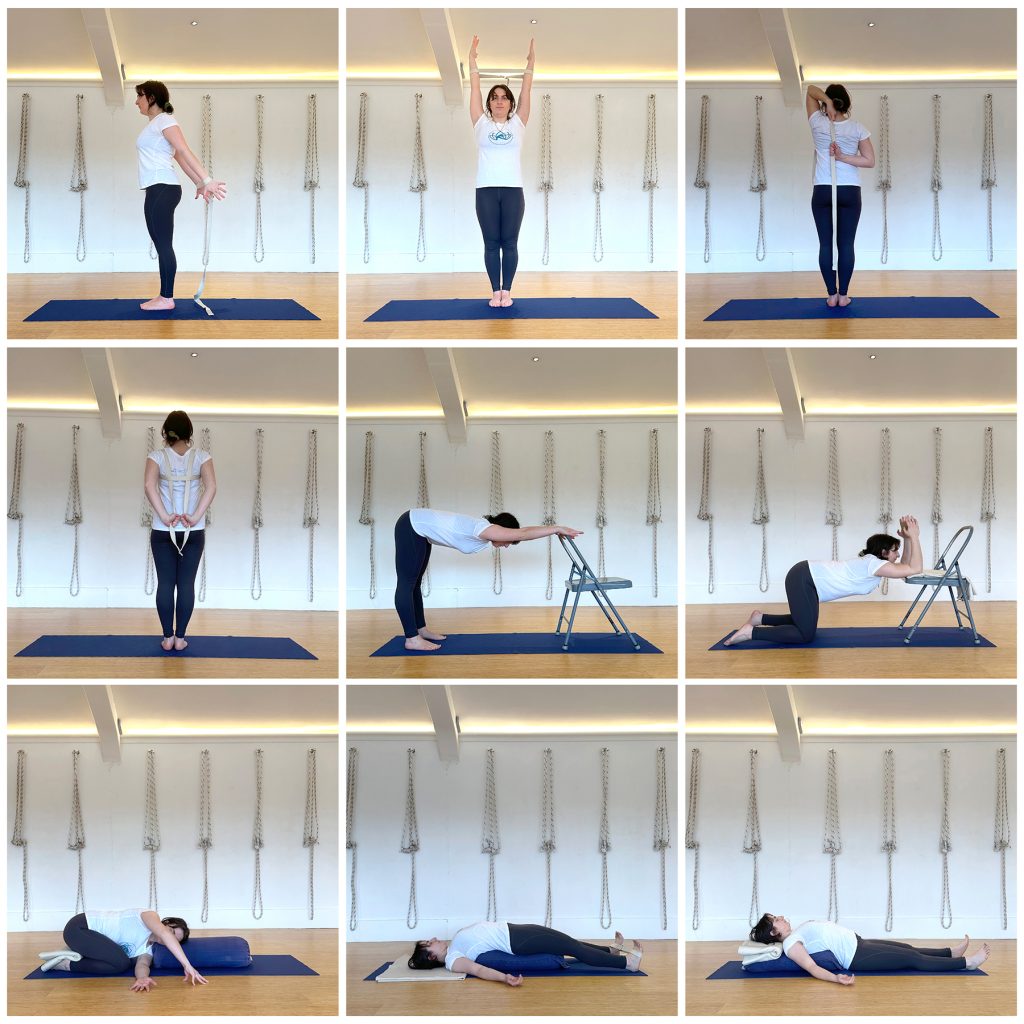
In cold weather we tend to contract the shoulders and chest and make ourselves smaller. In fact this reduces blood flow and makes us colder! Opening out the whole scapular band is a healthier approach- positive for circulation and mental outlook.
Try this neat little toolkit to help open your shoulders in all directions- front, back and sides. The tops of the shoulders roll back and the shoulder blades suck from back to front to really open out the top chest space. Freedom!

